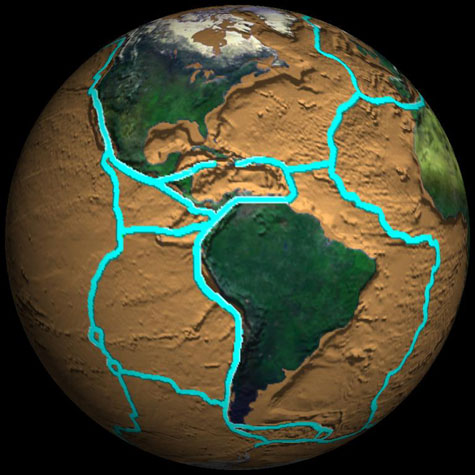

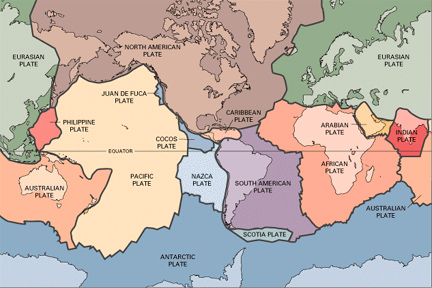
The earth's surface is broken into seven large and many small moving plates. These plates, each about 50 miles thick, move relative to one another an average of a few inches a year. Three types of movement are recognized at the boundaries between plates: convergent, divergent and transform-fault.
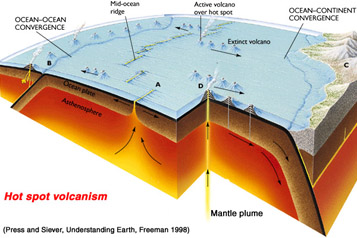
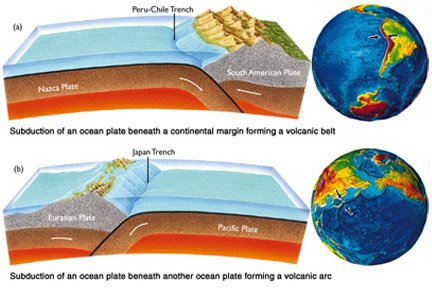
At convergent boundaries, plates move toward each other and collide. Where an oceanic plate collides with a continental plate, the oceanic plate tips down and slides beneath the continental plate forming a deep ocean trench (long, narrow, deep basin.) An example of this type of movement, called subduction, occurs at the boundary between the oceanic Nazca Plate and the continental South American Plate.
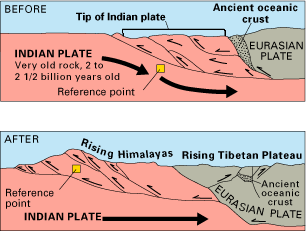

At divergent boundaries, plates move away from each other such as at the Mid-Atlantic Ridge. Where plates diverge, hot, molten rock rises and cools adding new material to the edges of the oceanic plates. This process is known as sea-floor spreading.

